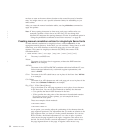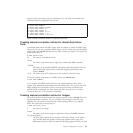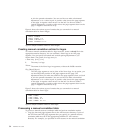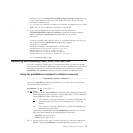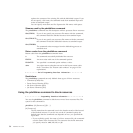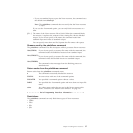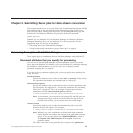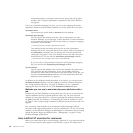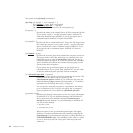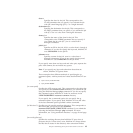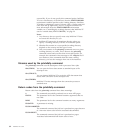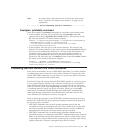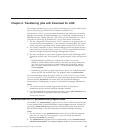command specifies, or the path to the resource group that the -g option
specifies. See “Using the pdxtloadres command to load Xerox resources”
on page 42.
If you use a parameter mapping file, how you set up the mapping file entries
determines which of these document attributes you must specify for Xerox jobs:
document-format
You must always specify lcds or metacode for this attribute.
destination-pass-through
You can specify this attribute with the value or values that you want
InfoPrint Manager to pass through. To have InfoPrint XT read information
in the parameter mapping file and use the values to compare to mapping
file entries, use this format:
-x destination-pass-through=-opa=passthru_values
The valid keywords and values that you can use with a parameter
mapping file are the same ones that you can specify with the -p option of
the pdxtloadres command. You can specify one or more keyword and
value pairs. See page 62. This is an example of keyword and value pairs
that InfoPrint XT can use with the destination-pass-through attribute:
-x destination-pass-through=-opa=class=D,forms=BILLING
If you use only *=* keyword and value pairs in the parameter mapping
file, you can omit the destination-pass-through attribute.
resource-context
You can specify this attribute with a value that identifies the path to the
AFP resources that the job requires. If you use the xinlr conversion
parameter to embed the AFP resources in the data stream for the job, you
can omit the resource-context attribute. For more information about the
xinlr conversion parameter, see page 96.
In addition to the attributes already described, as an option, you can specify the
document-comment attribute. Use this attribute to activate transform directives.
See “Using transform directives” on page 29. Whether you use a parameter
mapping file does not affect the use of the document-comment attribute.
Methods you can use to associate document attributes with a
job
InfoPrint XT provides flexibility in the methods that you can use to associate the
required attributes and any optional attributes with a job. The most common
methods are using Download for z/OS and specifying the attributes directly with
the pdpr command. See Chapter 6, “Transferring jobs with Download for z/OS,”
on page 67, and “Using the pdpr command to transform and print Xerox jobs” on
page 61.
Less commonly used methods are associating an InfoPrint Manager default
document with a logical destination or using an attributes file. To use one of these
methods, see the InfoPrint Manager documentation for information about creating
default document objects and attributes files. “Bibliography” on page 171 lists
InfoPrint Manager publications.
How InfoPrint XT searches for resources
Before you submit Xerox jobs for processing by InfoPrint XT, you must load all the
Xerox resources that the jobs require on the Windows system. The load process
60 InfoPrint XT Guide



